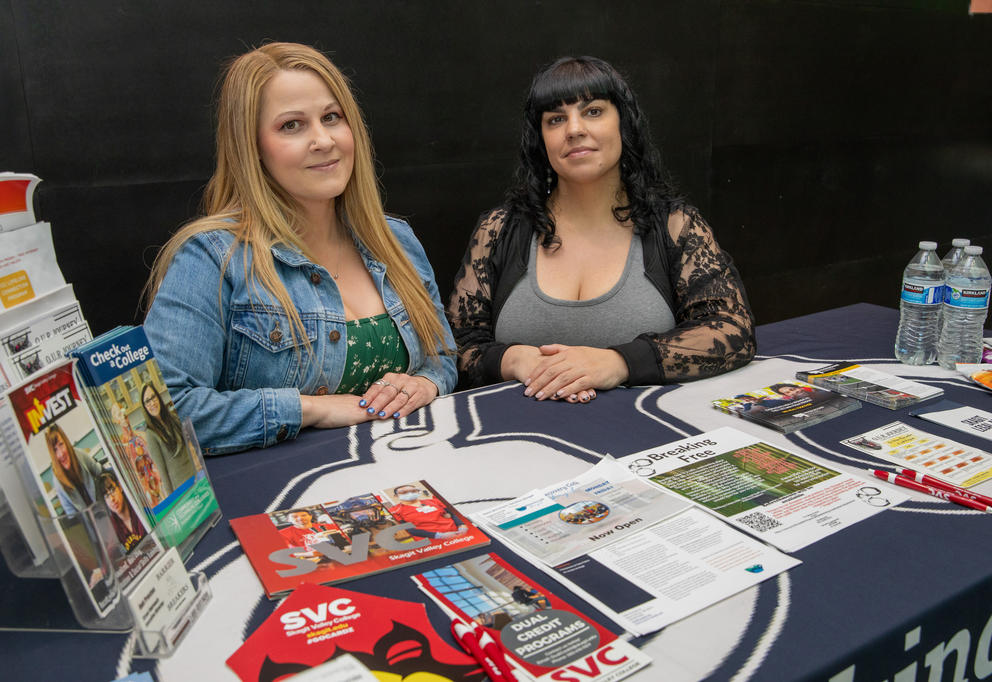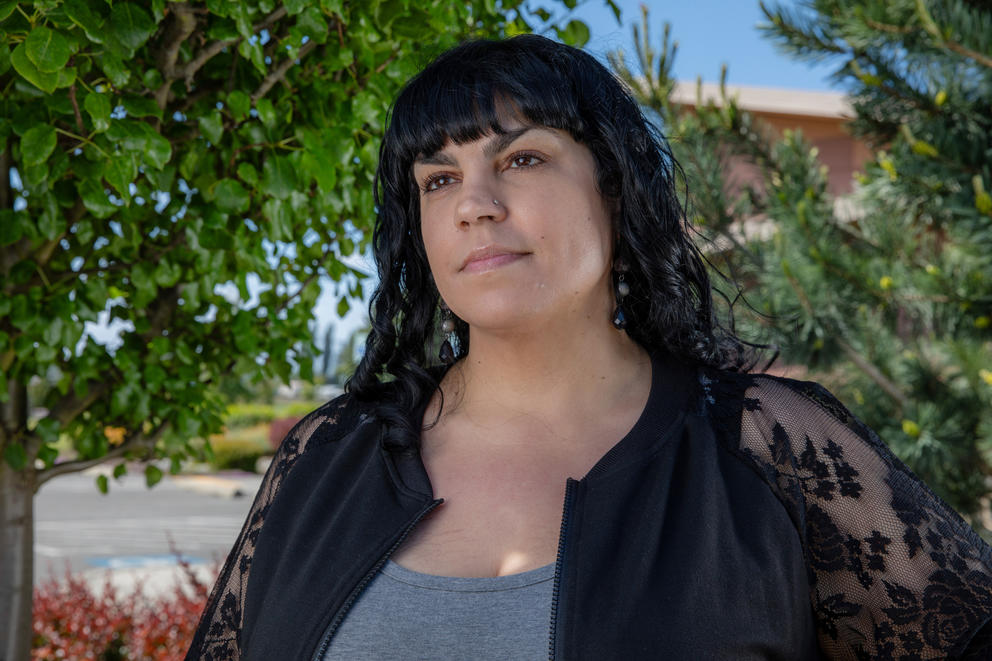Upon her release from the Washington Corrections Center for Women, Meyer felt rudderless, facing the challenges of life as a convicted felon while starting the uphill battle of recovery from substance reliance.
Meyer’s parole officer put her in contact with Aaron Kirk, the student success navigator for the reentry program at SVC. The reentry program provides support for people who have been incarcerated and are looking to pursue higher education.
During his work with formerly incarcerated individuals, Kirk found a large crossover of people like Meyer, who were in prison and had a history of substance use. In response, he founded the Skagit Valley Breaking Free Club, a space for these students to support each other.
“It’s all about building a pro-social network, a positive community, and a place where people are supported regardless of where they are in their recovery journey,” Kirk said. “We have people who have been sober for a long time and people who are just kind of riding on the edge of exploring sobriety.”
The school also recognized the need to work on overdose prevention. SVC has created a student-led model for harm reduction and recovery support that has become an example to colleges across the state.
The Washington State Department of Health reports that overdose deaths per 100,000 people ages 18-24 jumped from 85 in 2018 to 177 in 2022. They also report 553 positive naloxone responses to overdoses in March alone.
The Washington State Legislature is making an effort to support schools in providing harm-reduction resources. House Bill 2112 passed in February, requiring naloxone and testing strips in public schools and all higher-education institutions. Testing strips allow someone to test a substance before using, to guarantee they are not taking something more dangerous like fentanyl.
Naloxone, an opioid overdose reversal medication, is already widely available on college campuses; the state’s seven largest institutions all have it available or have staff equipped with it at all times. The new law promises to fund these resources. It also requires schools to offer accessible classes on how to administer naloxone and respond to overdose emergencies.
At SVC, Kirk provides formerly incarcerated students with resources, information and guidance as they enroll in classes, apply for financial aid and meet any other hurdle that may prevent them from succeeding in school. He also employs a small group of formerly incarcerated students who all identify as being in recovery, including Meyer.
The student employees lead the weekly meetings and do outreach for the program at the county jail and in community and drug courts. They also hand out harm-reduction tools such as naloxone and fentanyl testing strips.
Since the overlap between substance use and incarceration is high, Kirk says intertwining these services allows them to reach a larger audience and find more individuals who need support.
Genevieve Ward, another student employee for Kirk at SVC, became friends with Meyer in prison. They supported each other through their recovery journeys, together becoming community leaders who helped others travel the same path. Ward says this level of support is essential for anyone going through recovery.
“Having that kind of support pushes you to be a better person,” Ward said. “You look around the room, and you see people you have made bad choices with or broken the law with … and they’ve changed their lives, so for me, it inspires me to be better.”
SVC club members see the support of other students as necessary in their recovery process. The work is also a requirement for the State of Washington Collegiate Recovery Support Initiative (SWCRSI) seed grant. Money from the grant helps pay the wages of the student employees as well as providing some of the harm-reduction tools.
Patricia Maarhuis, the WSU collegiate recovery administrator, oversees the SWCRSI grant, which supports colleges around the state in starting their own drug harm-reduction programs. The grant is active at seven universities and colleges in Washington. For a school to receive a grant, they must show that their program is largely student-led.
“What’s important is that they hear from students who know about their experiences, and that gives credibility,” Maarhuis said. “The other thing it does is that it’s somebody who’s got life experience and has made changes.”
The importance of student involvement in harm-reduction programs has taken root here. At Seattle University, “peer health educators” lead workshops for students and faculty on how to administer naloxone and what to do in a drug-related emergency. The University of Washington relies on Students for Sensible Drug Policy to stock the Hall Health Center with naloxone and fentanyl testing strips.
When evaluating schools for the grant, Maarhuis wants to see that a program will be able to become self-sufficient once the seed grant expires. At smaller colleges, she has found success embedding this grant money in existing programs, such as the reentry program at SVC. These are known as navigator programs, helping students navigate their time in college.
Maarhuis says four-year universities usually have a health center on campus that can provide harm-reduction resources. Colleges that do not must find alternative ways to provide these resources.
“Two-year colleges are built differently,” Maarhuis explains. “They don’t have their own student health service with the clinic and physicians and nurses. They’ll have a basic-needs department. Which often their navigator program might be tied to. Most likely the harm-reduction stuff is going to be routed through their basic-needs programs.”
Another recipient of the SWCRSI grant is Renton Technical College. They have intertwined their housing initiative with a harm-reduction program, another crossover population.
As Maarhuis puts it, “Harm reduction is the CPR of our time.” She says access to harm-reduction tools is wildly important – mitigating damage while people are using drugs is how to limit overdose deaths.
Meyer and Ward have both become fixtures of their community helping others reclaim their lives. Just a few years ago, however, either of them could have been one moment away from a very different ending. Naloxone and testing strips limit this risk of death.
The community-based approach at SVC provides these resources, along with space and information for those who have chosen to pursue recovery.
For Meyer, that decision came a couple of months after being released from prison when she relapsed.
“I was in trouble with DOC. I was disappointed in myself, I let a lot of people down, including my family, including Genevieve,” Meyer explains. “To tell myself ‘What are you doing?’ for a weekend and look at the damage. I knew I needed to. I was going to get out of it.”
Meyer and Ward are examples of how these spaces and communities build important support networks for those battling substance-use disorder. The SVC model is growing: At Western Washington, an entirely student-organized and -led “breaking free” club is being formed.
Ward graduated SVC with a 4.0 GPA and is now pursuing a degree in human services at Western Washington University. Meyer gets to walk across the stage as a SVC graduate in June. Both of them have not only changed their own lives but helped people around them reclaim their own.
“When you give people equal opportunity and access to education and these resources, you can do anything,” Meyer said. “You have a future. You get self-confidence and self-esteem and knowledge and self-worth and a sense of community, a sense of meaningful purpose in your life.”





